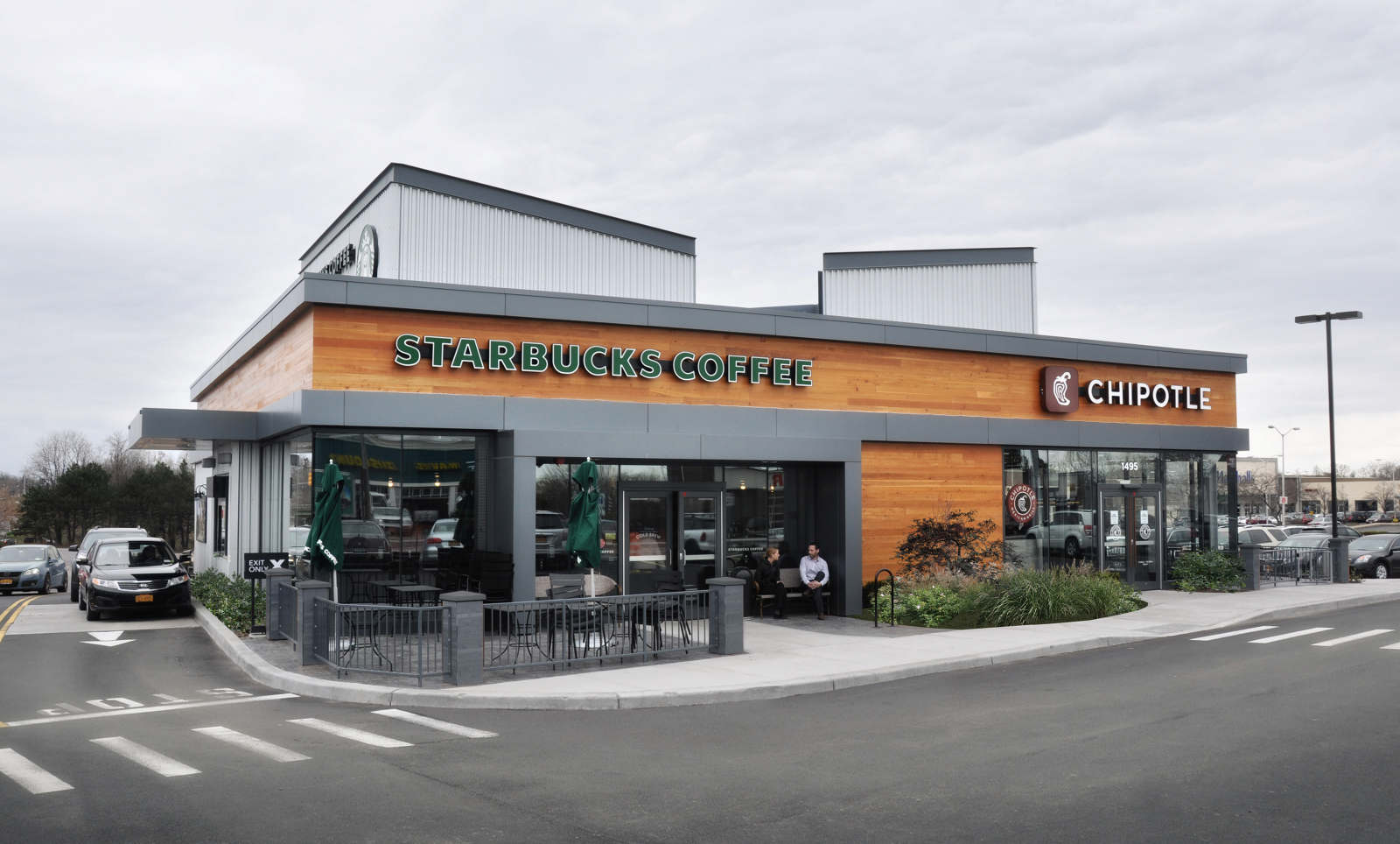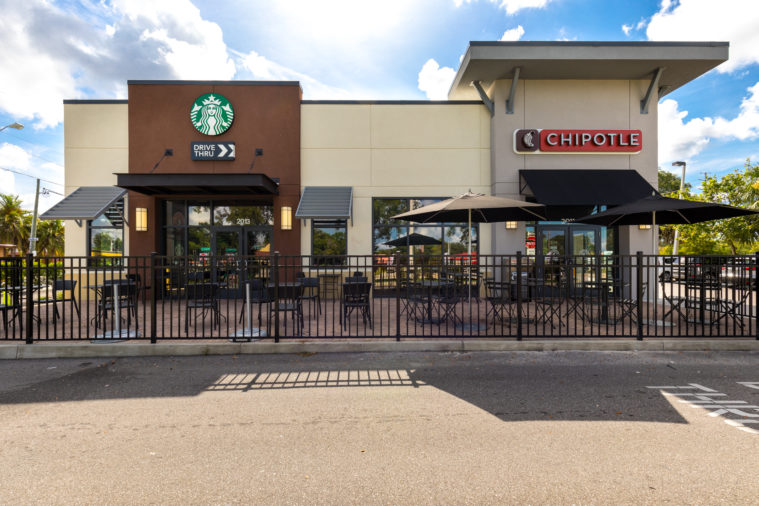The Starbucks and Chipotle Customer Base

The Starbucks and Chipotle customer bases share some similarities, but they also have distinct characteristics that reflect their unique brand identities and target audiences. This analysis delves into the demographics and psychographics of each customer base, highlighting their shared values and priorities while also exploring the potential overlap between them.
Demographics and Psychographics of Starbucks Customers
Starbucks customers are diverse, encompassing a wide range of ages, incomes, and lifestyles. However, some common demographic trends emerge. Starbucks customers tend to be younger, with a median age of 35-44 years old. They are also more likely to be college-educated and have higher incomes than the general population.
- Age: The majority of Starbucks customers fall between the ages of 25-44, with a significant portion being young professionals and millennials. This demographic is known for its disposable income and preference for convenience and premium experiences.
- Education: Starbucks customers are more likely to have a college degree or higher. This aligns with their preference for quality and a sophisticated brand image.
- Income: Starbucks customers generally have higher incomes than the average American, reflecting their ability to afford premium coffee and other products.
- Lifestyle: Starbucks customers often lead busy and active lifestyles, seeking quick and convenient options for their daily coffee fix. They value convenience, speed, and the ability to stay connected while on the go.
Demographics and Psychographics of Chipotle Customers
Chipotle customers are known for their health-conscious and environmentally aware choices. They value fresh, high-quality ingredients and are often willing to pay a premium for sustainable and ethically sourced food.
- Age: Chipotle’s target audience is slightly younger than Starbucks, with a strong focus on millennials and Gen Z. This demographic is known for its strong interest in healthy eating and social responsibility.
- Education: Similar to Starbucks, Chipotle customers are likely to have a college degree or higher, reflecting their awareness of food sourcing and sustainability.
- Income: Chipotle customers generally have moderate to higher incomes, as they are willing to spend a bit more for quality ingredients and ethical sourcing.
- Lifestyle: Chipotle customers are often active individuals who prioritize healthy eating and living. They are also likely to be environmentally conscious and concerned about the impact of their food choices.
Shared Values and Priorities
Both Starbucks and Chipotle customers share some key values and priorities, including:
- Convenience: Both brands offer convenient locations and quick service options, catering to busy lifestyles.
- Quality: Both Starbucks and Chipotle are known for their commitment to quality, using premium ingredients and striving for high standards in their products and services.
- Experience: Both brands offer a unique and engaging customer experience, creating a sense of community and belonging among their patrons.
Potential Overlap Between Customer Bases
There is a significant overlap between the Starbucks and Chipotle customer bases. Both brands attract young, educated, and affluent consumers who value convenience, quality, and experience.
- Millennials and Gen Z: These generations are known for their willingness to spend on premium products and experiences. They are also highly engaged with social media and value brands that align with their values.
- Health-Conscious Consumers: Both Starbucks and Chipotle offer healthy options, catering to the growing trend of health-conscious consumers.
- Urban Dwellers: Both brands have a strong presence in urban areas, where they cater to busy professionals and young adults.
Product and Service Offerings: Starbucks Chipotle

Starbucks and Chipotle, despite being in different industries, have carved out unique niches in the food and beverage market. Both brands offer a diverse menu, but their pricing strategies, customer experience, and brand positioning differ significantly.
Menu Items and Pricing Strategies
Starbucks and Chipotle have distinct menu offerings, reflecting their target audiences and brand identities. Starbucks focuses on coffee and tea beverages, pastries, and light meals, while Chipotle specializes in customizable burritos, bowls, salads, and tacos.
Starbucks’ menu items cater to a wide range of tastes and dietary preferences, with options like classic lattes, seasonal specials, and vegan pastries. Their pricing strategy is based on premium pricing, reflecting the high-quality ingredients and brand image.
Chipotle’s menu emphasizes fresh, customizable ingredients, with a focus on organic and sustainable sourcing. Their pricing strategy is more value-oriented, offering a competitive price point for generous portions.
Customer Experience
Starbucks and Chipotle provide different customer experiences, each catering to specific needs and preferences. Starbucks offers a quick and convenient experience, with a focus on speed and efficiency. Their stores are typically designed for quick transactions, with well-trained baristas serving customers promptly.
Chipotle, on the other hand, prioritizes a more interactive and customizable experience. Their stores are designed to be spacious and inviting, allowing customers to personalize their meals. While the service can be slower than Starbucks, Chipotle’s emphasis on customization fosters a sense of ownership and control over the meal.
Brand Positioning and Messaging
Starbucks positions itself as a premium brand, offering a sophisticated and comfortable experience. Their messaging emphasizes quality, craftsmanship, and the creation of a welcoming third space. Starbucks’ brand resonates with customers seeking a premium coffee experience and a sense of community.
Chipotle, on the other hand, positions itself as a fast-casual brand focused on fresh, wholesome ingredients. Their messaging emphasizes transparency, sustainability, and ethical sourcing. Chipotle’s brand resonates with customers seeking healthy and customizable food options, aligned with their values.
Competitive Landscape and Market Trends

The coffee and fast-casual restaurant industries are highly competitive, with numerous players vying for market share. Understanding the key competitors and emerging trends in these sectors is crucial for both Starbucks and Chipotle to maintain their market position and adapt to evolving consumer preferences.
Key Competitors
The key competitors of Starbucks and Chipotle are diverse, spanning across various segments within their respective industries.
- Starbucks faces competition from other coffee giants like Dunkin’ Donuts, Tim Hortons, Peet’s Coffee, and Costa Coffee. These companies offer similar products and compete for the same customer base. Additionally, independent coffee shops and specialty coffee roasters are also gaining popularity, posing a threat to Starbucks’ market dominance.
- Chipotle competes with other fast-casual chains such as Qdoba, Moe’s Southwest Grill, Panera Bread, and Subway. These companies offer similar menu items and target a similar customer demographic. Furthermore, fast-food restaurants like Taco Bell and McDonald’s are also increasingly incorporating healthier and more customizable options, challenging Chipotle’s position in the fast-casual market.
Emerging Trends
The coffee and fast-casual restaurant sectors are constantly evolving, driven by changing consumer preferences and technological advancements.
- Increased Demand for Sustainability and Ethical Sourcing: Consumers are increasingly demanding ethically sourced ingredients and environmentally friendly practices from their food and beverage providers. Both Starbucks and Chipotle have made strides in this area, but they need to continue to invest in sustainable sourcing and transparency to meet consumer expectations.
- Focus on Health and Wellness: Consumers are becoming more health-conscious and seeking healthier options in their food and beverages. This trend is driving the demand for plant-based alternatives, low-calorie options, and personalized meal plans. Both Starbucks and Chipotle have introduced healthier options to their menus, but they need to continue to innovate to stay ahead of the curve.
- Digital Transformation: The rise of mobile ordering, online payments, and delivery services has significantly transformed the restaurant industry. Both Starbucks and Chipotle have invested heavily in digital platforms to enhance customer convenience and optimize their operations. This trend is likely to continue, with further integration of technology into the customer experience.
- Personalized Experiences: Consumers are seeking personalized experiences that cater to their individual preferences. This trend is evident in the increasing popularity of customizable menus, loyalty programs, and personalized recommendations. Both Starbucks and Chipotle have implemented loyalty programs and customization options, but they need to further leverage data analytics to create truly personalized experiences for their customers.
Collaboration and Competition, Starbucks chipotle
The potential for collaboration or competition between Starbucks and Chipotle is a complex and multifaceted issue.
- Potential for Collaboration: Both companies could potentially collaborate on initiatives that leverage their strengths and complement each other’s offerings. For example, they could explore co-branding opportunities, such as offering Starbucks coffee at Chipotle restaurants or creating a joint loyalty program. However, such collaborations would need to be carefully planned and executed to avoid diluting their respective brand identities.
- Potential for Competition: Both companies could also potentially compete in the future, especially as they expand their product offerings and explore new market segments. For instance, Starbucks has already ventured into the food space with its “Starbucks Evenings” program, which offers a more extensive menu with alcoholic beverages. Chipotle could also potentially expand into the coffee market by offering its own line of coffee or partnering with a coffee roaster. The potential for competition is high, especially as both companies seek to capitalize on the growing demand for healthy and convenient food and beverage options.